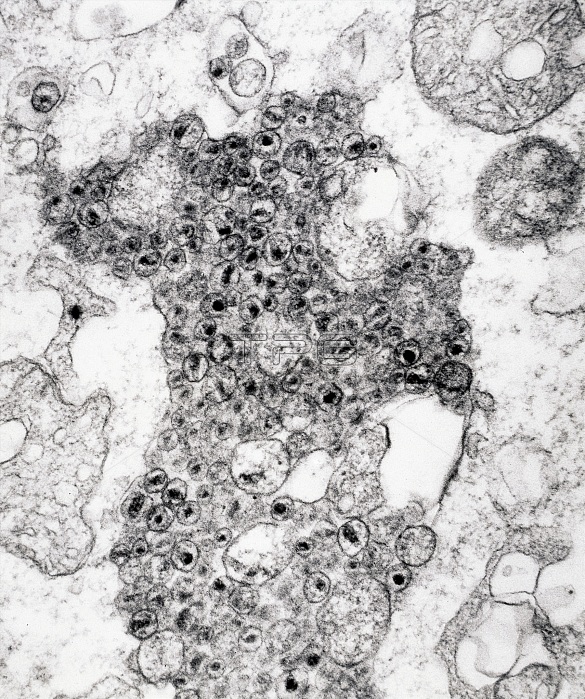
Ultrathin section of Human T-lymphocyte showing an aggregate of HIV particles. Note various shapes of the core. The human immunodeficiency virus (HIV) is responible for acquired immune deficiency syndrome, or AIDS. The virus permits opportunistic infections, malignancies, and neurologic disease. The immunologic defect is due to the effect the virus has in making T4 lymphocytes ineffective; in addition the virus can injure the cells of the nervous system. After initial infection, the patient may be an asymptomatic carrier for years. Most cases of AIDS have developed after sexual contact with an infected person. The virus is also spread via tears or saliva into blood from blood into blood, by transfusion of infected blood, contaminated hypodermic needles, or transplacentally from an infected mother. AIDS is a fatal disease for which there is currently no cure. TEM Magnification =x17,500 at 70mm.
| px | px | dpi | = | cm | x | cm | = | MB |
Details
Creative#:
TOP22213782
Source:
達志影像
Authorization Type:
RM
Release Information:
須由TPG 完整授權
Model Release:
N/A
Property Release:
No
Right to Privacy:
No
Same folder images:

 Loading
Loading